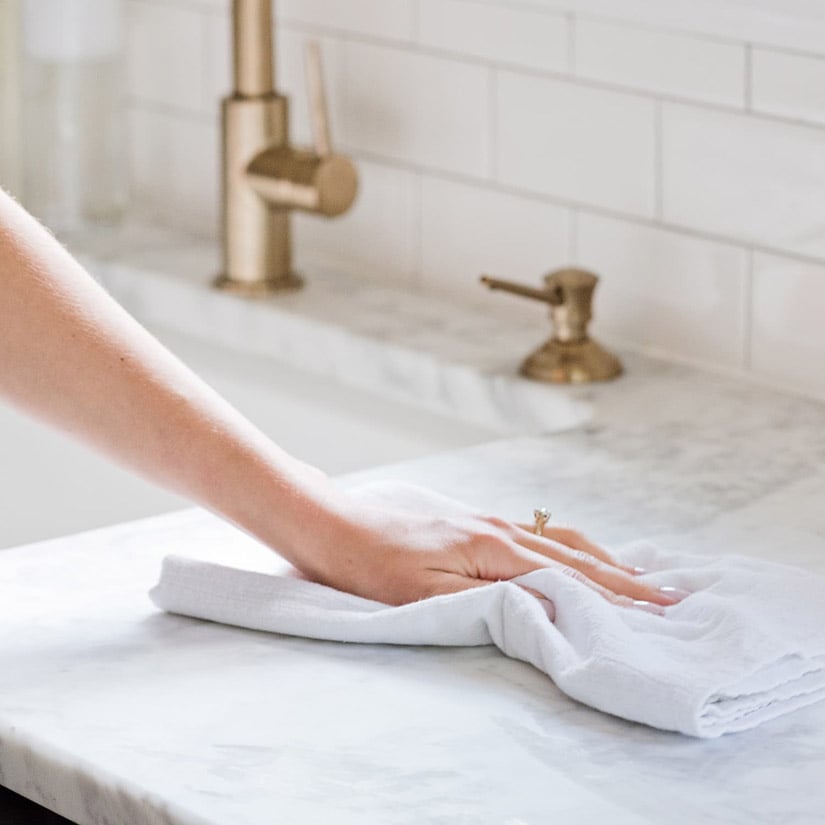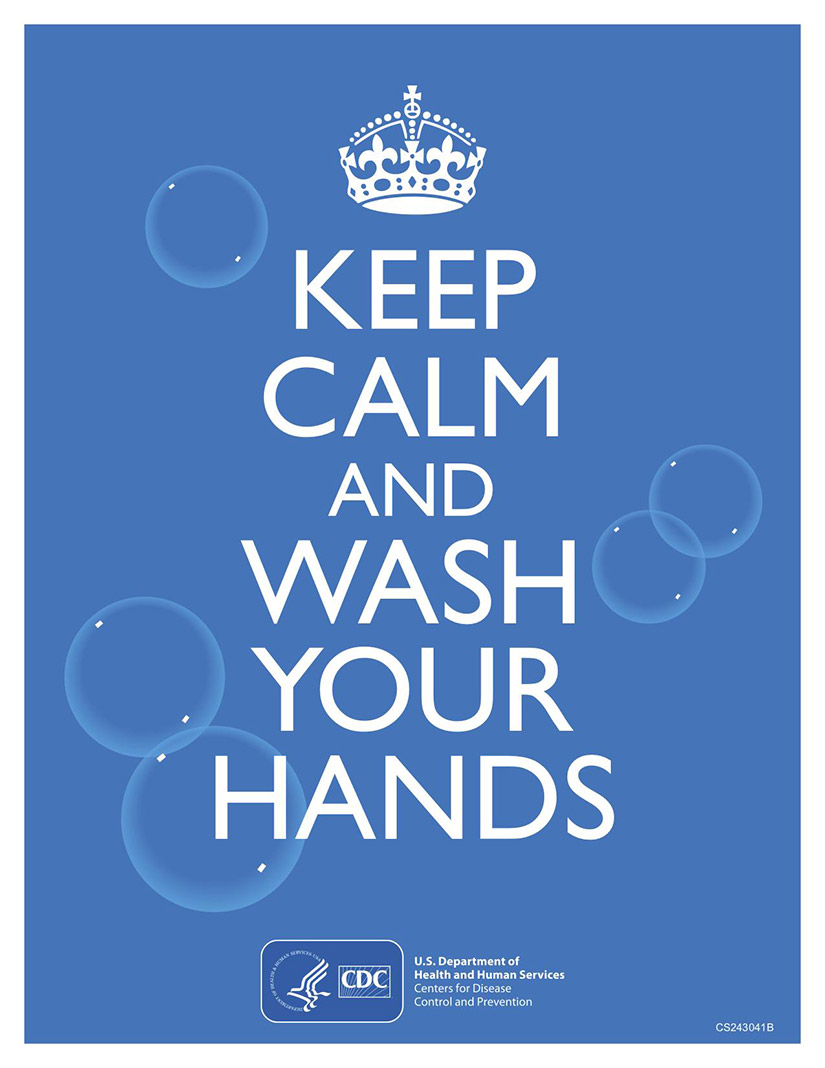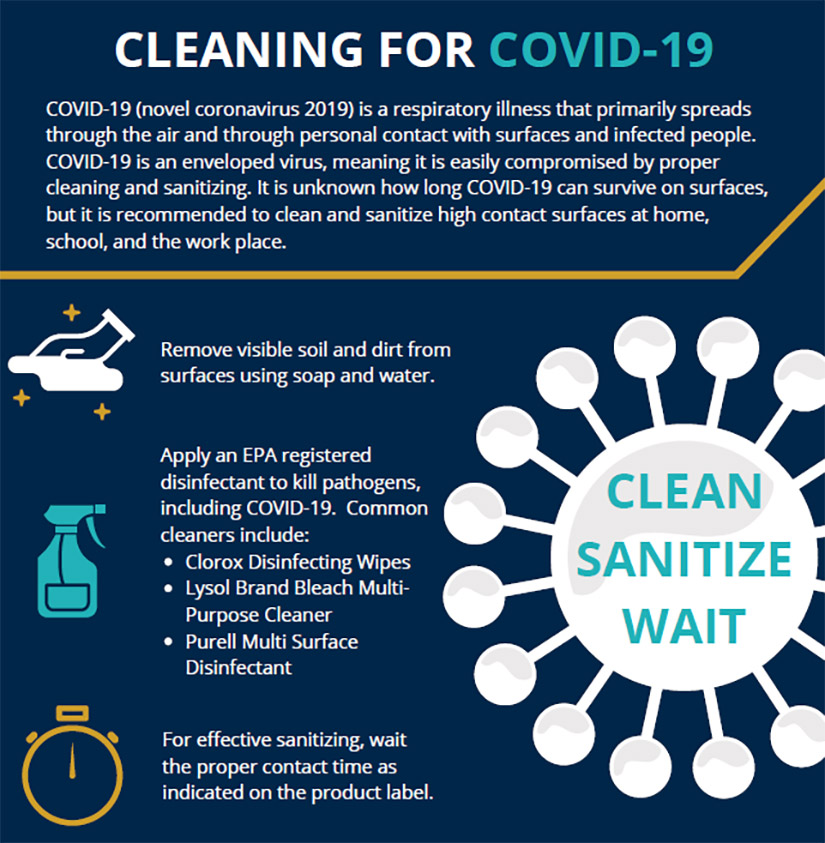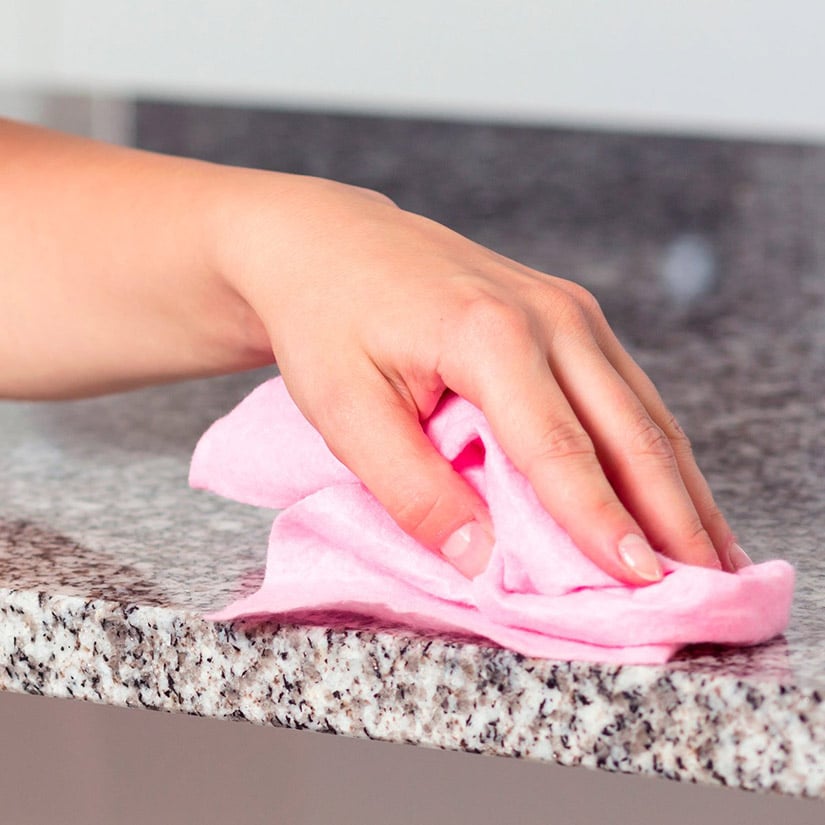Cleaning For Coronavirus (COVID-19): Kitchen And Bath Edition
During this time, we’re all trying to keep our loved ones safe and secure. Even though the COVID-19 virus is new, it’s related to other pathogens people have encountered before. That means there are proven ways to clean and disinfect areas of your home.
Disinfecting an area doesn’t require anything special — most standard disinfectants work just fine. In this article, we’ll talk about some cleaning and disinfecting tips. We’ll also go over what you can do if you have special surfaces like marble or butcher block.
Cleaning and disinfecting are actually two different things. Cleaning is what you to do remove dirt, dust, and grime from surfaces. A thorough cleaning will reduce the number of germs and pathogens by physically removing them, but it won’t kill the ones that are left. Disinfecting is what you do to actually kill germs. Keeping a safe home in the COVID-19 environment is about using the one-two punch of cleaning and disinfecting.
COVID-19 On Surfaces

Recent research from the CDC and other scientists have found that COVID-19 has similar stability as the original SARS virus. The scientists found that COVID-19 (virus name SARS-CoV-2) can live on a number of different materials for varying lengths. Here’s a summary of what they found:
- Lives on copper for up to 4 hours
- Lives on cardboard up to 24 hours
- Lives on 2-3 days on plastic and stainless steel
While the study didn’t test all common household materials, it’s safe to assume that the virus can live on other things like wood, marble, tile, and stone, at least for a time. But the good news is that regular cleaning for COVID-19 can help.
If you only have time to do a little bit of cleaning, focus on high-use areas. These include doorknobs, cabinet handles, appliances, faucets, and the main prep area of your countertop.
Cleaning Tips

It’s important to start out with cleaning first. By removing dust and grime, you can disinfect the surface underneath effectively after. If you just jump right in with disinfectants, you’ll have to use more disinfectant to get the area clean and free of germs, and you might leave some stragglers behind. At the molecular level, soap makes particles slippery so they can be removed. Disinfectants don’t do this, and that’s why it’s important to clean with soap before you disinfect.
So what’s the best way to clean for COVID-19? Using soap and water does the trick. You can use mild household spray cleaners too, depending on the material you’re cleaning (more on that later) Take a cue from CDC handwashing guidelines and wipe down an area for 20 seconds?don’t just do one pass. Use gloves when you clean, and wash your hands for 20 seconds after you take the gloves off, as well.
Kitchen countertops are especially important to keep clean during this time. The kitchen sees a lot of traffic, including coughs, sneezes, and airborne particulates. Your countertops can be a landing zone for the virus (if someone is infected), so it’s a good idea to clean before and after each time you cook, or at least daily.
The bathroom is a similar situation. We don’t need to go into detail here, but it’s safe to say many surfaces can become breeding grounds for pathogens. If you’re in an area affected by the virus, you should be doing daily cleanings with soap and water to get rid of any grime that could give the virus a place to hide. It’s also a good idea to keep toothbrushes away in a drawer if you share the bathroom?some people are messy brushers.
Disinfecting Tips

So after you clean the surface with soap and water, you should disinfect the area. You can use a number of common solutions to disinfect areas from COVID-19:
- Household cleaners with bleach
- Household cleaners with other active ingredients like hydrogen peroxide
- Alcohol solutions with at least 70% alcohol
The important thing to know is that an all-natural solution probably won’t work to kill the virus (besides alcohol). You can consult this list of COVID-19 disinfectants from the CDC to find out more information. Using gloves, spray the solution on the area and follow any instructions about letting it sit for a certain time. Many disinfectants need to sit on the surface for about 10 minutes to work. Make sure you get into the crevices between tiles and where different surfaces meet. Also, follow instructions about air ventilation.
If you don’t disinfect, soap and water cleaning for COVID-19 won’t be as effective over time. It may be possible to catch the virus by touching an infected surface and then touching your face. And we all know how bad people are at not touching their faces.
Considerations For Special Surfaces

Let’s talk about marble. The soap and water method works well with marble countertops, but you may want to disinfect at some points as well. An alcohol-based solution is the safest to use on marble?bleach is acidic and can etch the surface of the marble over time.
You can use most household cleaners on granite, just be sure to wipe it clean with a wet cloth to avoid film buildup. The same goes for quartz countertops.
White vinegar is a popular cleaner for butcher block countertops, but unfortunately, it won’t kill viruses like COVID-19. For this type of countertop, you should use a hydrogen-peroxide based cleaner. This will kill the virus without damaging the wood. Leave the solution on the wood for 10 minutes, and then wipe it off with a wet cloth. Use a dry cloth to dry the countertop after that.
Sealed concrete countertops can take diluted bleach solutions or alcohol-based cleaners. Use alcohol if you’re worried about wearing down the finish.
Stainless steel can take any type of household disinfectant you throw at it?that’s good because the virus can live for the longest period on stainless steel. The same goes for non-porous materials like resin or countertops that have thick, dense finishes.
The post Cleaning For Coronavirus (COVID-19): Kitchen And Bath Edition appeared first on Kitchen Cabinet Kings Blog.
